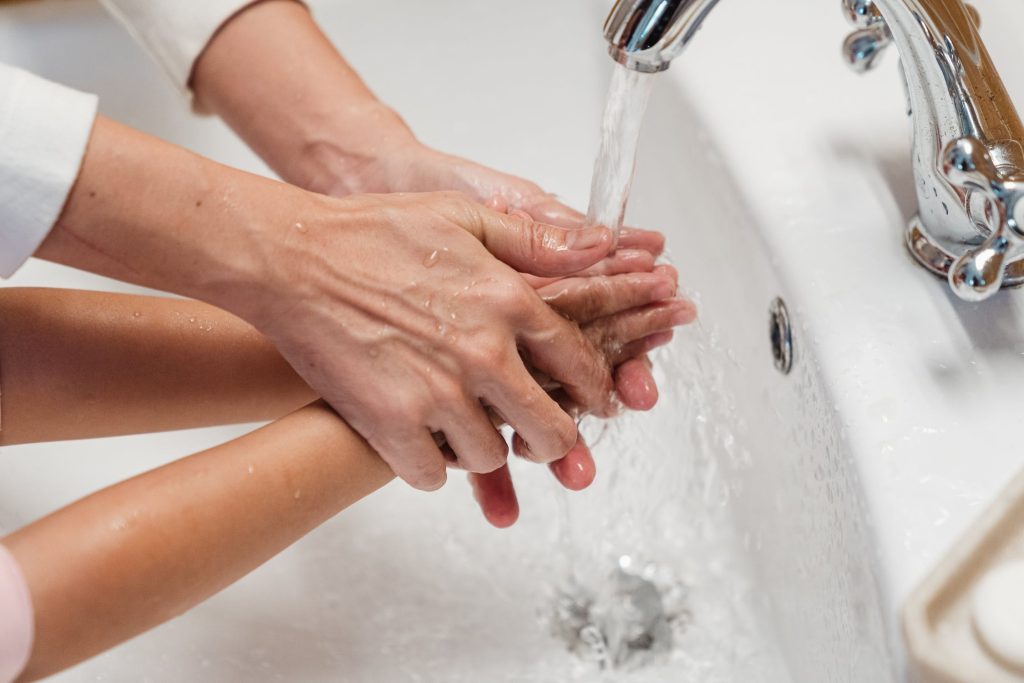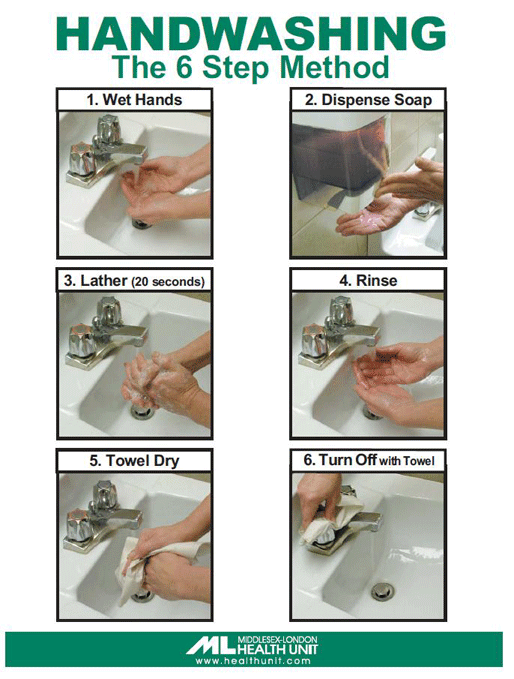3.3 Hand Hygiene
“Hand hygiene is the action of cleaning your hands. It relates to the removal or killing of micro-organisms from the hands while maintaining good skin integrity” (Southwestern Public Health, 2020).
Handwashing is the most important measure used to prevent the spread of illness in group care and educational settings. Children, educators and volunteers should wash their hands upon entry into the classroom space. Not only will this help prevent the spread of illness it also helps prevent any cross-contamination of allergens for children with life-threatening allergies sharing the same learning space. Hand washing is the preferred method over the use of hand sanitizer for the prevention of illness. Hand sanitizer may be used by educators when they do not have convenient access to hand washing facilities. Hand sanitizer is not a substitute for proper hand washing after diaper changes and toileting or before preparing food. Hand hygiene is necessary in the following situations for both children and adults in early years settings.
- Upon entering the classroom at arrival or when returning indoors from outdoor play;
- Prior to eating or serving food;
- After each diapering or toileting incident;
- When hands are visibly soiled;
- After coughing, sneezing, blowing nose, or wiping nose;
- After cleaning up any vomit, diarrhea, urine, or blood;
- After caring for anyone who is ill;
- After handling any pet urine or excrement;
- After using cleaning products to avoid contaminating food or sensory materials with chemicals;
- Before administering any first aid or touching a child’s or your own eyes, ears, mouth, nose, or wounds.
Handwashing
Young children need help learning how and when to wash their hands. Teaching these self-care routines in a calm and reassuring environment is helpful in establishing healthy habits for children. Educators can sing songs with children to ensure children are lathering and scrubbing their hands for the appropriate length of time for proper cleaning. This supports the engagement of children in routine tasks by making these preventative measures more enjoyable. Educators model proper hand washing techniques by washing their hands throughout the day, alongside the children.

The 6 Step Method
Please review the 6 step guide to proper handwashing:

Exercise
Test Your Knowledge
Hand Sanitizer
Hand sanitizer is not a replacement for handwashing but can help support effective hand hygiene in certain circumstances. Educators are often helping children by wiping noses during outdoor play. Educators cannot reduce legislated ratios to go indoors to wash their hands after wiping a child’s nose so accessing hand sanitizer while outdoors can be a preventative measure until handwashing facilities can be accessed.
Hand sanitizer should never be used after diapering or helping a child use the toilet. Hand sanitizer should only be used when hands are not visibly soiled. Hand sanitizer was encouraged more often during the Covid-19 pandemic to support hand hygiene for children. Young children often put their hands in their mouths so handwashing is the preferred method of hand hygiene over the use of hand sanitizer for young children.
Download (PDF)
Click link to download:
- Please review the hand sanitizer how-to poster from the Southwestern Public Health Unit.
Useful tip: Having access to hand lotion will help keep an educator’s hands from drying out and cracking with repeated hand washing and sanitizing. Ensure hand lotion is free from strong fragrances and from potential allergens.

